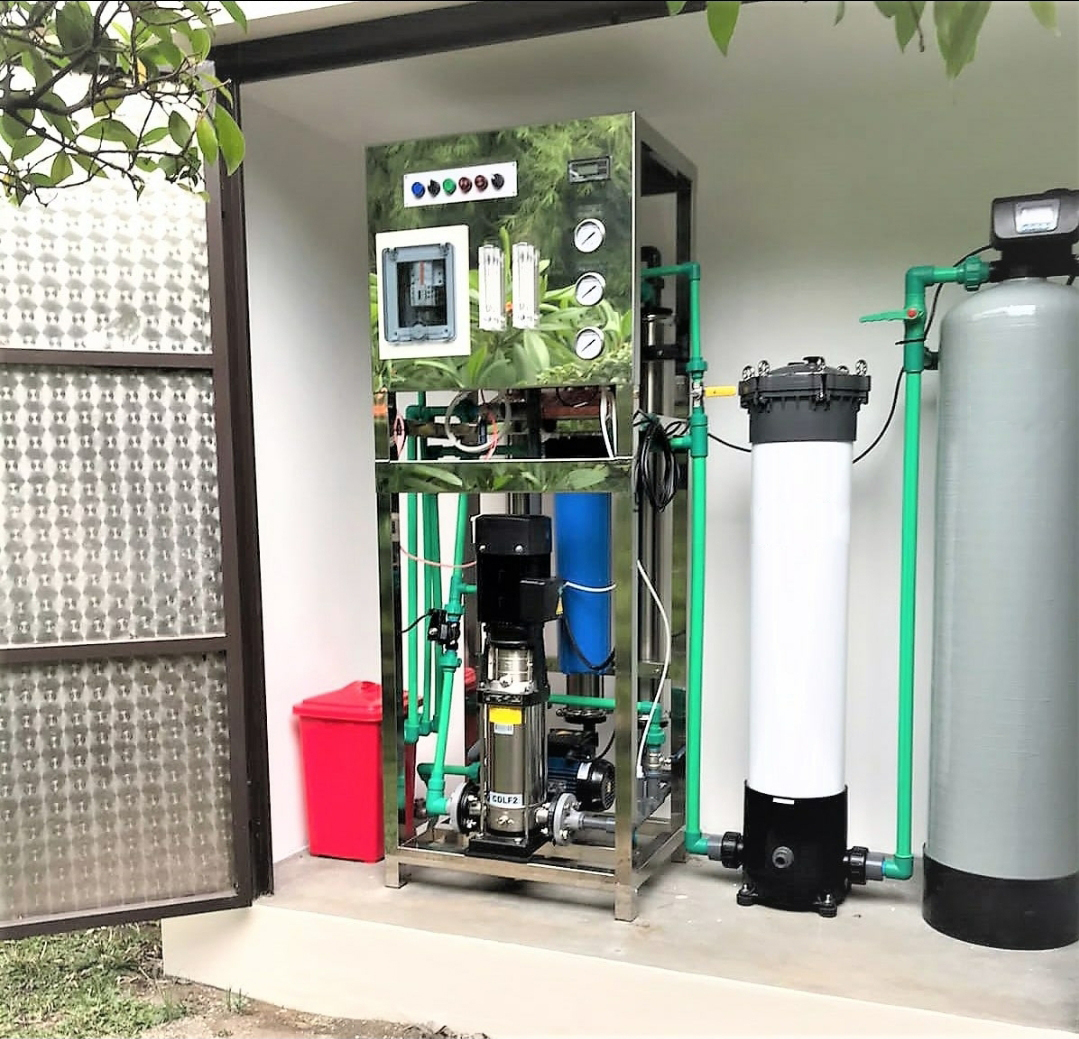
WTP
Water Treatment Processes
Rp99000000.00
Out of stock
Water treatment processes,have 2 kind :
Traditional Filtration (WTP):
Used mainly to remove turbidity and pathogenic organisms. May also address color, taste, and smell issues in water.
For iron and manganese removal, consider adding aeration and oxidation processes.
RO (Reverse Osmosis):
The main component in WTP for effective water treatment.
Achieves purity levels of about 95% to 99% by using semi- permeable membranes.
Dissolved salts are discharged in the reject line for drainage12.
Remember, RO is a powerful technology that ensures clean and safe water for various applications
Reverse Osmosis (RO) system is a powerful technology used to purify water by removing unwanted particles, particularly salts. Here’s how it works:
Membrane Separation: RO uses semi-permeable membranes that allow water molecules to pass through while blocking larger contaminants. These membranes act like cellophane, separating purified water from impurities.
High Pressure: Water is forced through these membranes at high pressure. As a result, purified water moves from the concentrated side (where impurities are) to the dilute side, leaving behind the rejected impurities. This process effectively removes salts, microorganisms, and other unwanted substances.
Applications:
Desalination: RO is commonly used for desalinating seawater or brackish water, making it suitable for drinking or industrial purposes.
Water Softening: It removes hardness (calcium and magnesium ions) from water.
Purification: RO improves water quality by removing color, odor, and taste issues.
Industrial Processes: RO is essential in various industries, such as pharmaceuticals, electronics, and food production.
Reject Line: The remaining dissolved salts (concentrated impurities) are discharged through a reject line for drainage.
Remember, RO systems achieve purity levels of about 95% to 99%, making them highly effective
Water Treatment Plants (WTP) and the Reverse Osmosis (RO) process, there are certain exceptions and considerations to keep in mind:
Temporary WTP Disruptions:
Reasons for Shutdown: A WTP may shut down unexpectedly due to various reasons, such as pump failure, PLC (Programmable Logic Controller) issues, electrical problems, weather events, supply chain disruptions, planned maintenance, or equipment retrofits.
Contingency Planning: Developing a proper contingency plan before an emergency can help avoid lost production and extra costs.
Ideal Capacity: Determine the ideal capacity required to avoid disruption at baseload for 24 hours. This flow rate (typically in gallons per minute or cubic meters per hour) should guide the selection of a temporary WTP.
Common Equipment Packages:
Booster Pumps
Multimedia Filtration (MMF)
Cartridge Filtration (CF)
Microfiltration or Ultrafiltration (MF/UF)
Single Pass Reverse Osmosis (RO)
Double Pass Reverse Osmosis (RO)
Electro-Deionization (EDI)
Deionization Pods (DI)
RO Process Exceptions:
Membrane Fouling: RO membranes can become fouled over time due to scaling, organic matter, or biofilm formation. Regular cleaning and maintenance are essential.
Concentration Polarization: As water passes through the membrane, solutes accumulate near the membrane surface, leading to concentration polarization. Proper design and operation can mitigate this effect.
Energy Intensive: RO requires high pressure, making it energy-intensive. Energy costs should be considered.
Rejection Efficiency: While RO achieves high purity levels (95% to 99%), some impurities may still pass through. Monitoring and adjusting system parameters are crucial.
Pre-Treatment: Effective pre-treatment (such as multimedia filtration and cartridge filtration) is essential to prevent membrane fouling and enhance RO performance2.
Remember, understanding these exceptions and planning accordingly ensures reliable water treatment and minimizes disruptions. If you have any more questions, feel free to ask!
